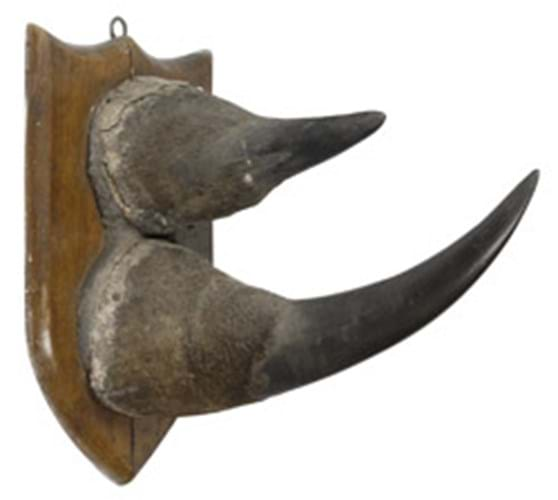
It seems that the Goverment may now be granting permission to sell rhino horns mounted pre-1947 regardless of the specific technique employed by the taxidermist.
Most antiques that include the "parts and derivatives" of endangered species enjoy an exemption from CITES controls known as the "worked item" derogation. This states that an item shall be exempt from the normal sales controls if it was acquired prior to June 1947 and has been significantly altered from its natural raw state for jewellery, adornment, art, utility or musical instrument.
The problem has been the interpretation of the term "worked".
As it was carved for the purpose of art and utility in the 18th century, a Chinese rhino libation cup can be sold within the European Union without the need for a CITES certificate.
Likewise, there are no problems with the head of a white rhino shot in 1921 and mounted as a big game trophy by Rowland Ward of Piccadilly.
More problematic are objects such as a rhino horn mounted on an oak shield. A pair of rhino horns in their natural state simply attached to a shield by the taxidermist has been deemed unworked and illegal to sell regardless of date.
However, should the taxidermist have chosen to leave the two horns united by a tiny flap of animal skin, they could be considered "worked" and so can be sold.
But has there been a change of heart? Natural history specialists Tennants - who sold rhino horn trophies in their November sale for prices up to £65,000 - understand the Department for the Environment, Food and Rural Affiars are now prepared to considered both types of rhino trophies as worked.
Each case will be considered on its own merit, but, upon the advice of other auctioneers, they have applied for licences to sell in future sales items that would previously have been turned down.
By Roland Arkell




